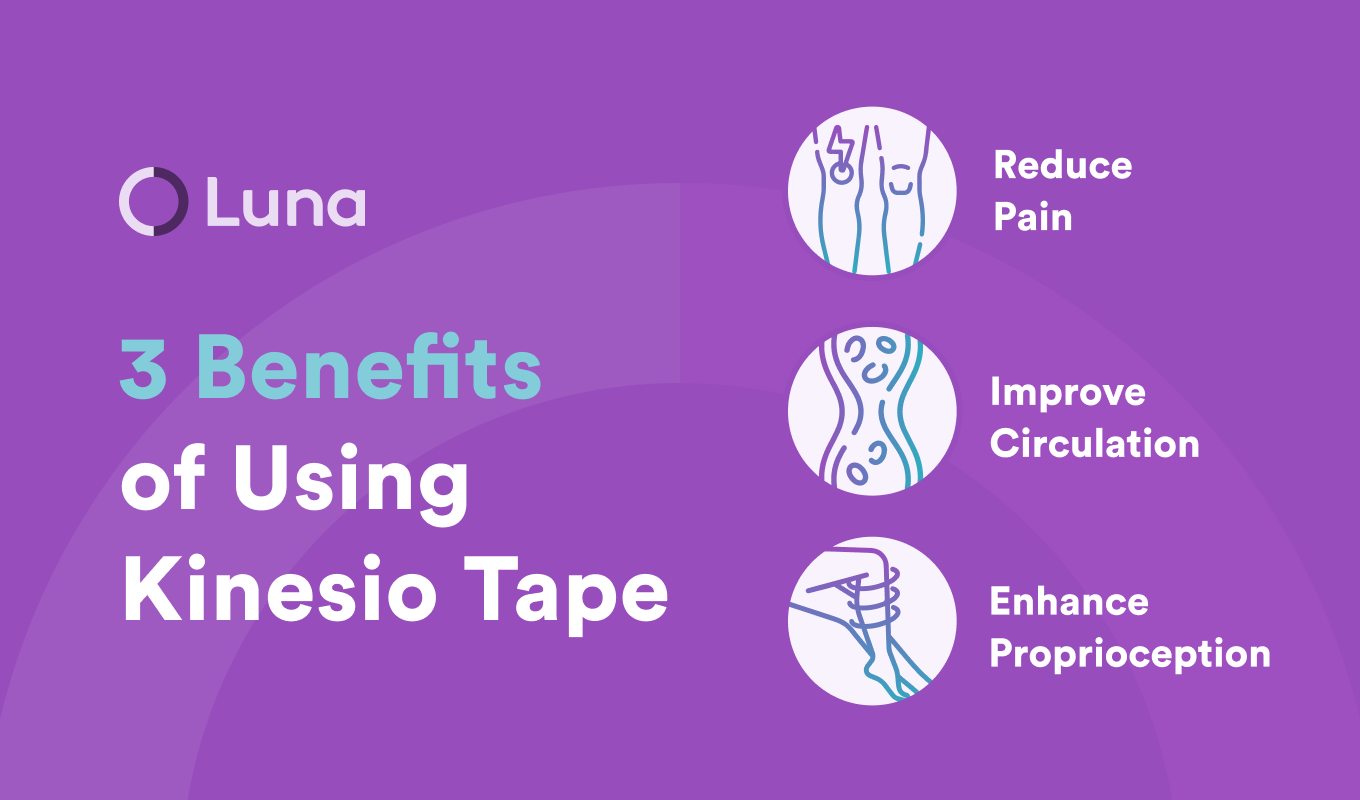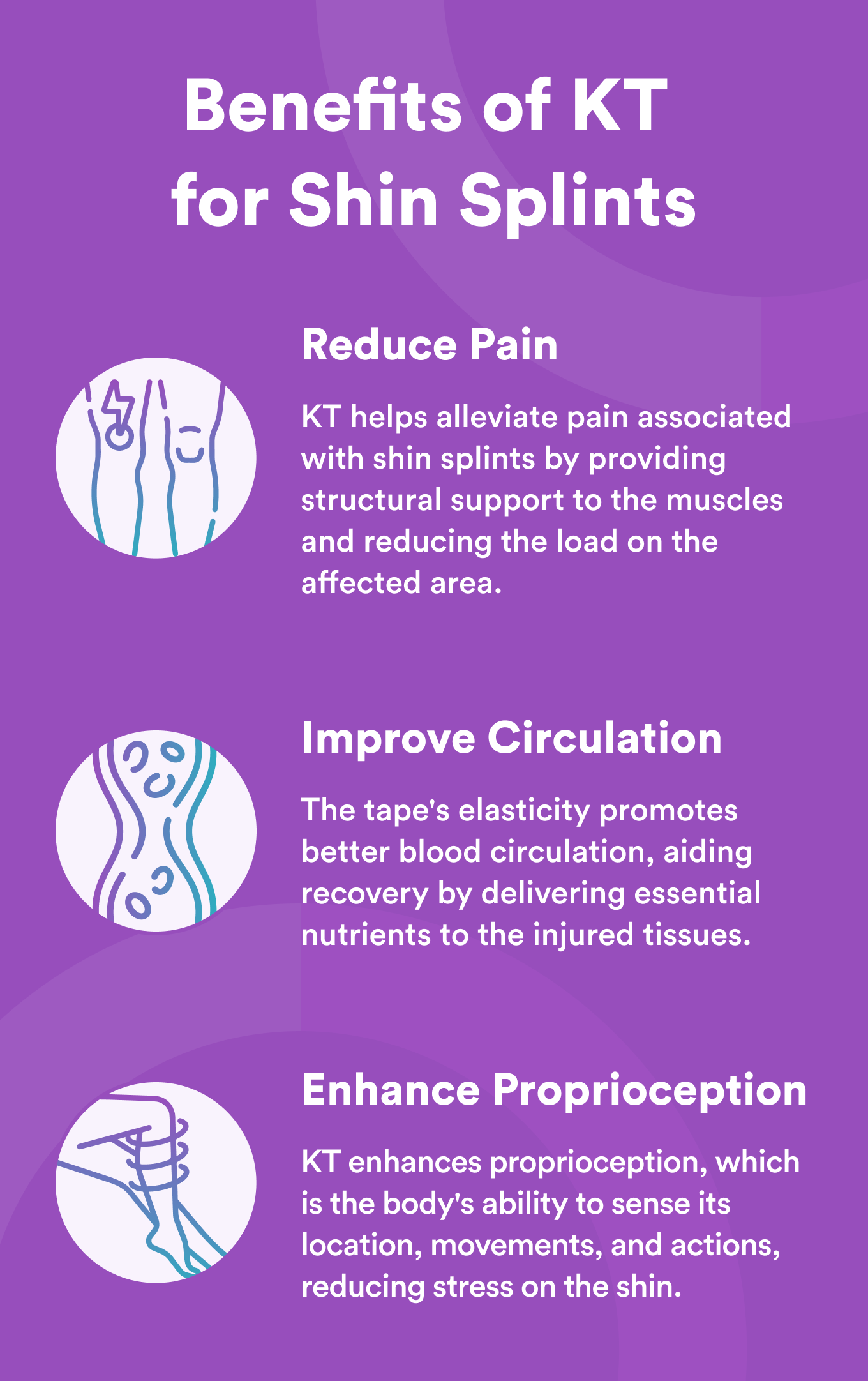How to Use Kinesio Tape (KT) to Treat Shin Splints

Shin splints, a common term in sports and fitness, is a persistent and painful issue for many. The condition, formally known as medial tibial stress syndrome, results from overuse or repetitive stress on the shinbone and the tissues attaching muscles to the shinbone.
Rest, ice, proper footwear, and physical therapy can help manage shin splints. Plus, Kinesio Tape (KT) is emerging as a popular method to further support recovery.
Understanding Shin Splints
Symptoms of shin splints include pain, tenderness, and swelling along the inner edge of the shinbone (tibia). It usually occurs during or after physical activity. Athletes, runners, dancers, and others who engage in high-impact activities are particularly susceptible to this condition. The primary causes of shin splints include overpronation, muscle imbalances, inadequate footwear, and sudden increases in exercise intensity or duration.
How Kinesio Tape Helps
Kinesio Tape is a specialized elastic tape designed to mimic human skin's properties. When applied correctly, KT supports muscles and joints while allowing a full range of motion.

How to Apply Kinesio Tape to Shin Splints
Applying Kinesio Tape to shin splints is an effective, cost-effective option for providing support and pain relief. For subtle but immediate improvements, follow this step-by-step guide on how to apply KT for shin splints:
- Clean the skin: Start with clean and dry skin to ensure proper adhesion. You may need to shave the area for better tape adherence.

- Measure and cut: Measure the required length of Kinesio Tape, typically from just below the knee to the top of the ankle. Cut the tape with rounded edges to prevent corners from peeling.

- Prepare the tape: Hold the ends of the tape and gently stretch it to activate the adhesive properties. This pre-stretching helps the tape adhere better to the skin.

- Apply the anchor: Begin by applying the anchor of the tape. This is a piece of tape with no stretch, usually placed just below the knee on the inner side of the shin. Smooth it down to ensure proper adhesion.

- Create a "Y" or "I" shape: For shin splints, you can create either a "Y" or "I" shape with the tape, depending on the area you want to target. For a "Y" shape, start from the anchor and split the tape into two arms. One arm should run along the inner side of the shin, and the other should run along the outer side, meeting at the mid-point of the shin. For an "I" shape, apply a single strip of tape along the inner side of the shin, from the anchor to the top of the ankle.

- Apply with light tension: Apply the tape with light tension, especially along the injured area. Avoid pulling the tape too tightly, as it may cause discomfort or restrict blood flow.

- Rub to activate adhesive: After applying the tape, rub it gently to activate the adhesive. This helps the tape adhere securely to the skin.

- Check for comfort: Ensure that the tape is comfortably applied. It should provide support without causing excessive pressure or irritation.

How Long Does Kinesio Tape Last?
Kinesio Tape can stay on your skin for 2-5 days. Remove it if you notice itching, redness, rash, or other adverse side effects. When you're ready to remove the tape, peel it away slowly and gently. You can shower with the tape applied, but it will decrease the time it stays in place.
Shin Splint Prevention and Treatment With Physical Therapy
While Kinesio Tape can be a valuable tool in managing shin splints, it's wise to seek comprehensive care for a long-term solution, especially if your shin splints are a chronic condition. Consider consulting with a physical therapist for personalized, expert advice. A Luna physical therapist provides care in the comfort of your home. They will arrive at your house on a day and time that works best for you. Your therapist then works with you to identify and address the risk factors contributing to your shin splint condition. Then, they will design a personalized treatment plan that perfectly fits your daily routine, making your recovery easier and faster.
Taking proactive steps toward recovery can make a significant difference in overcoming shin splints and preventing their recurrence. Find a Luna PT near you to get started with a convenient, effective way to treat and prevent shin splints. Soon, you could regain full mobility, return to everyday activities, and enjoy a pain-free and active lifestyle!
This entry was posted in Luna Blog and tagged Tips, Therapists, Patients.




